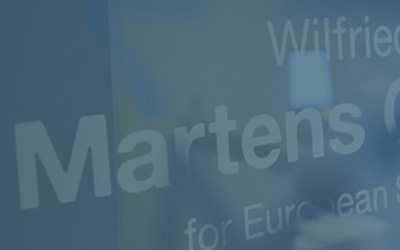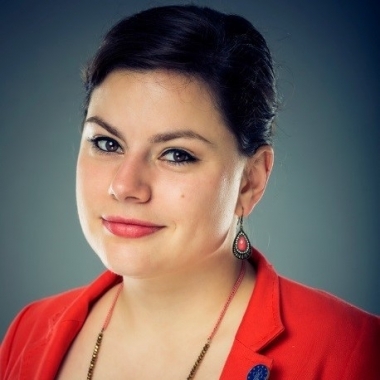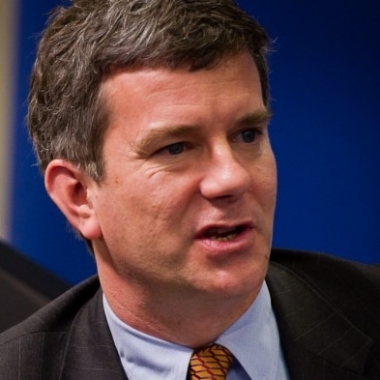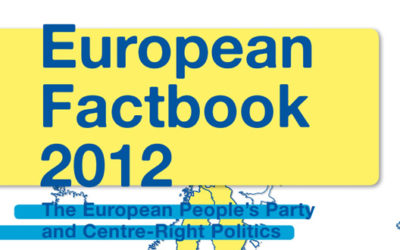 Loading...
Loading...-
29 June, 1995; nearly 26 years ago, the conservative party Partido Popular was elected to the government of the Spanish capital region. They have not left the ruling office since. And they will not do so until at least 2023, with the situation seeming like there is still a long way to go before the left can regain their long-lost centrum.
26 years is a long time (back then, the PlayStation 1 was still the premier video game console!), and the robust victory by PP’s Isabel Díaz Ayuso this past Tuesday, 4 May, may let us think that Madrid is simply a conservative region and that there is not much to be analysed here. The truth is that only two years ago, Partido Popular fielded the same candidate (for the first time then) and the party’s main competition, the socialist PSOE, ran the same candidate as they did last Tuesday. Back then, the Socialists took 37 seats to PP’s 30 in the regional parliament and took 27% of votes (22% for PP). This week, the conservatives more than doubled their 2019 result, while the socialists dropped by over 10 points.
What changed so dramatically in just 2 years? A global pandemic happened. In the most decentralised country in Europe, our regions have quite a big autonomous power, and the nearly year-long national ‘State of Alarm’ did not change that much. This made the measures to fight COVID-19 quite heterogeneous among the 17 regions of my Iberian homeland, especially after the first wave of the pandemic. And Madrid stood out in a clearly differentiated way.
Last Autumn, Madrid’s regional government decided that every business and sector of activity that could remain open would. They launched an original approach, based on massive testing campaigns and small, partial lockdowns by districts. Here is a blog post from two months ago with detailed information on the singularities of the COVID fight in Madrid. This approach made it possible to reach a few important milestones for the region: in the last quarter of 2020, Madrid’s economic growth was 9 times bigger than the national average, it is the only Spanish region to have experienced a solid employment recovery, and it became the richest region in the country for the first time, overtaking Catalonia in terms of GDP, despite having a smaller population. All these benefits, without a worse outcome in terms of COVID-19 deaths, hospitalisations, or infection rate.
Then, in early spring, Spanish political hormones went a little bit crazy and PP’s preferred partner, Ciudadanos (Renew Europe), aligned with the socialists in a motion of no-confidence against their own coalition governments with PP in the South-eastern region of Murcia and North-western region of Castilla y León. Before it could also happen in Madrid, the regional president and party leader, Ms Díaz Ayuso (or simply Ayuso, as she is commonly referred to), dissolved parliament and called for early elections. 54 days later, Ciudadanos no longer exists in the regional landscape and Ayuso and PP robustly defeated the parties of the national government coalition, PSOE and Podemos.
Why did so many people vote for the centre-right this time, despite having voted for the left two years ago? Of course, the ‘Freedom’ (Ayuso’s political slogan in this campaign) to continue doing business, socialise, go to bars, restaurants, concerts, or museums, while most of the rest of Spaniards could not, created a major incentive to vote for her. But also the relatively good economic data, not only during the pandemic but also in recent years, during which la Comunidad succeeded in attracting many national and international businesses with its soft taxation on both companies and income, its great infrastructure, and quality of life, have made its citizens appreciate liberal policies much more than in other Spanish regions.
Madrid is a rich, dynamic, diverse, and socially free society. Capital of the World Pride, not only is it one of the most LGBT-friendly regions in Europe, but also one of the most welcoming destinations for both tourists and workers from around the world. Its model attracts businesses, but also talent, individuals, and families looking for a safe, warm, and prosperous place to call home. Because of all of the above, the strong and direct character of Isabel Diaz Ayuso – who has become a true pop icon- and because of the poor management of the leftist national government, a majority of Madrilenians voted for Partido Popular and sent a strong message to Pedro Sánchez and his party: we are back!
The immediate future of the party on a national level is yet to be determined. Still, polls indicate that the party is growing firmly and that a national election, if held today, would probably result in a tie between the socialists and Partido Popular, with an uncertain outcome regarding the strength of left and right blocks in the parliament. In any case, two days before the regional election, on 2 May, Madrid celebrated its local festivity, on the anniversary of the uprising against the Napoleonic occupation, marking one of the first ever defeats of the greatest army in the world, La Grande Armée. Back then, in May 1808, the citizens of Madrid lit a flame that would begin the fall of Napoleon and his empire (ABBA did not make a song about it, but it was much more epic, believe me). I am optimistic that this 4th of May of 2021 will also be a historical event, during which the people of Madrid lit another flame, relaunching the centre-right project of not only Partido Popular, but also every EPP member party, whether in Poland, Ireland, France, or Slovakia. Do not let the flame die and join us, Madrilenians, in shouting out: we are back!
Álvaro de la Cruz Centre-Right European People's Party Party Structures

Álvaro de la Cruz
The centre-right flame burns in Madrid
Blog
06 May 2021
-
Politicians need to answer more questions than ever before. And more than this, they need to provide answers more rapidly, and answers need to be more comprehensive. Due to the increase in the use of social network sites (SNS) and data being exchanged faster than ever, the challenge for politicians is to live up to the new and additional requirements involved in communicating with constituents. Online politics tries to offer tools to listen to constituents better and to reach out to them through new methods.
Laying the groundwork
Online tools are supposed to enhance democracy and make politics more efficient and effective. The online tools help citizens and politicians alike to exchange information in the process of reaching decisions. Nonetheless, Europe has seen not more but rather less political engagement in recent years—at least within political parties. Is public deliberation feasible through online politics, and if so, how can new tools be used to pave the way?
To answer these questions, it is necessary to take a step back and define the levels of representation. Traditionally, there have been ‘two sets of competing philosophies of representation’, as Ferber et al. (2007, 391) point out: ‘The trustee… model, where representatives act in accordance with their own judgement, versus the delegate, where representatives follow the wishes of their constituents.’ The authors go on to say that legislators do not conform completely to either type.
However, it seems reasonable to believe that the delegate model is becoming predominant. The way politicians carry out their work is changing as a result of new ways of exchanging information: the increased use of SNS, websites, email, Internet forums and chat rooms. In all these ways citizens are placing new demands on their representatives, and in this situation, the delegate model of representation is more appropriate.8
Eva Majewski Party Structures Political Parties Youth

Eva Majewski
Online politics for citizens in the twenty-first century
Blog
08 Oct 2015
-
The US political party system has displayed remarkable stability, unmatched by any other country. The US has had a two-party system with the same two political parties for over 150 years. Since the 1860s, all presidents and nearly all senators and representatives have been members of one of these two parties.
In recent years, however, dissatisfaction with the parties has been high. A record number of Americans now describe themselves as independents. Certain groups have arisen—for example, the Tea Party—which some believed might evolve into a third political party. All of these developments have led some observers to believe that the time is right for a third party.
These observers are probably wrong. Although a multiplicity of parties is the rule in most European democracies, the hurdles for third parties have always been high in the US. At the moment the two parties are as dominant in winning elections as they have been in any period. However, this electoral dominance does not mean that the American party system has been static.
The parties are in the midst of several dramatic changes: (1) the Republican and Democratic parties have become highly polarised, ideological parties with significant differences in worldview, (2) the two parties have weak discipline and fractures within their ranks, and (3) the two political parties now have significant competition from outside groups in terms of raising and spending funds on political campaigns. All of these developments have made the challenge of governing significantly more difficult.
This article will lay out why, despite evidence to the contrary, there is little prospect of the emergence of a third party and how the above-mentioned developments in the political parties present challenges to effective governance.
The hard road for a third party
US politics has several features that have always made the successful formation of a third party difficult. In all federal and the vast majority of state elections, the country has single-member districts and does not have proportional representation. The extensive size of the country, combined with the winner-take-all aspects of congressional elections and the Electoral College, mean that a party must not only be strong enough to win in individual states and districts, but also have electoral strength in several regions of the US. Add to these systemic factors that many states have erected obstacles to ballot access and it is clear that the road to success for a third party will always be a difficult one.
Read the full FREE article published in the June 2015 issue of the European View, the Martens Centre policy journal.
John C. Fortier Democracy Elections Party Structures Political Parties Transatlantic

John C. Fortier
Polarised and fractured US political parties and the challenges of governing
Blog
09 Sep 2015
-
Many current societal trends seem to be working against party-based democracy. A major decline in the membership of political parties has long been observed. Similarly, voter participation in elections, of all types, has fallen. As a result, the need for the renewal of political parties has become prominent in public discourse. Almost ironically, while democracy and the values it presents are still considered of high importance, public perception of political parties and institutions is rather negative.
Party politics is seen by many as a necessary evil. Yet, political parties are an essential part of a well-functioning democratic system, as democracy is a universal value and the democratic system undoubtedly one of the greatest achievements of Western civilisation.
Political parties and their structures evolved when society was fundamentally different—mostly in the late nineteenth century and early twentieth century—and the origins of our current modern parliamentary systems can be dated to almost 350 years ago. In today’s world, the environment in which political parties find themselves operating has fundamentally changed.
Globalisation, through the digital communications revolution, has changed how society is structured, how individuals work and how they communicate. However, parliamentary democracy as a system remains largely unchanged, and the same is true of political parties.
To what extent can one expect political parties to renew themselves and to better respond to current societal challenges? Is such an adaptation even possible without the evolution of the political system which includes the democratic and state institutions?
In order to answer these questions, one must understand the changes in the political environment, analyse the changing dynamics between different political actors, and understand the global trends affecting political parties on the national and local level.
A new environment for political parties: fragmentation, globalisation and changing societal dynamics
The traditional left–right divide in party politics was based on clear divisions in society which largely no longer exist. Large segments of society are fragmented and this means that the major political platforms of the past are now being challenged or are no longer functioning. Fragmentation is the new norm in politics and parliaments. In recent years supporters within parties have coalesced politically while moving ever further away from the supporters of other parties.
This phenomenon is very visible in the US, but it is also present in Europe. The result is that party politics has become increasingly polarised on both sides of the Atlantic. This polarisation makes compromise, and thereby effective governance, more difficult. Voter volatility, decreasing credibility and the corrosion of party loyalties have become normal in European party politics.
Read for FREE the full article published in the June 2015 issue of the European View, the Martens Centre policy journal.
Tomi Huhtanen Democracy Internet Party Structures Political Parties

Tomi Huhtanen
Can political parties evolve if the political system does not?
Blog
08 Sep 2015
-
The development of political systems, structures and entities is in the interest of every political scientist. For the CES these topics are very important, especially when it comes to developmental issues and the challenges facing political parties. In March 2013 Moisés Naím, a Venezuelan-born economist and politics scholar, published a very interesting and stimulating book titled ‘End of Power’, which examines some of the same questions the CES has addressed, by posing many of the concepts and questions of political systems in a global context. In his book, Naím observes that developed democracies are faced with elections in higher frequency which leads to a political party landscape that is unstable. Furthermore, Naím points out that new parties are appearing and fading away very quickly while non-decided voters in many developed countries are now becoming the largest voter group. These observations have also been made by many other scholars.
Classically, the dynamics of the political systems is presented as a landscape where the main power is held by the political elite, often characterised of consisting a small group of powerful people who have a privileged status and who are also governing within the society. A great deal of political checks and balances have been created in order to ensure that political elites and decision makers are regularly challenged and their actions revised. Political elitism as a concept is often used even today and garners a perception of stability in the minds of people but as Naím points out; political elites are anything but stable in today’s political climate.
Political entities need new ideas, approaches and solutions when facing the electorate. Such reinvigoration of a political party is brought by new individuals who are interested in politics and who want to engage with the political process. This is essential for a functional political system. However, over the past few decades, the trend has shown that often the best way to succeed in politics is to instead take another career path outside party-politics. An individual with a successful background in almost any field outside of politics is an attractive candidate for any political party. The perception is that those outside the political bubble are more capable to bring in fresh ideas and new thinking to a party’s membership. Throughout Europe, political parties have adapted to this reality and take it to account when selecting candidates for elections.
In all democracies, the political process boils down to individuals who are elected to take decisions and it can take elected officials many years to become accustomed with parliamentary processes and to become effective in their roles. As political parties continue to seek new candidates outside party ranks and due to the formation of new parties, it is now easier than ever for a first-time candidate to get elected. Some new parties and movements, like Beppe Grillo’s Five Star Movement in Italy, even set term limits for officeholders in order to guarantee rotation. On the flip side, a candidate or member of a parliament who knows that their stay in politics will be short and who reached their position without any great effort or investment, does not have the interest in making the difficult decisions that have a long term impact – simply because they don’t have to deal with long term consequences. Such an elected official can be dogmatic, uncompromising and rigid.
In recent times, there has been a growing trend amongst voters to reject not only professional politicians but professional parties also. This is partly due to voter’s disappointment and anger with a political system and political parties that have in their eyes not served them adequately. In turn, this has created a belief amongst some sections of the electorate that by electing a new political entity, this will bring with it a new way of doing politics, better representing the people and bringing with them better results.
The desire for new faces has become an increasingly strong influence in voters’ behavior, often even overshadowing the achievements and success of governments. An excellent example of this is Sweden, where current Prime Minister Reinfeldt, who has been in government for two consecutive terms, has made Sweden’s economy stay stable and positive in a European economic crisis which has meant the majority of Swedish voters are positive about the future, which is rather exceptional in Europe today. However, this has not led to a surge of support for Prime Minister Reinfeldt and the Moderate Party, with opinion polls in July showing support for the coalition government lagging behind that of its opponents.
Political careers are becoming shorter. Instead of continuing in politics, successful politicians are moving to the private sector becoming senior consultants and members of boards for a range of large and internationally recognised corporations – with a lifetime career in politics now becoming a rarity. This means that young people are not interested to invest in any political career partly because a long-term political career doesn’t exist for a large section of politicians anymore.
So what is the state of the political classes in politics today? Clearly, it has become more difficult to pinpoint who concretely belongs to the so-called political elite. However, although the faces of politics might change across the continent, the mechanisms and institutions in place continue working regardless of who is in power. New people with different professional backgrounds are getting elected to parliaments across Europe, but with less and less previous experience on political process. The newly elected representative often is no longer a career politician, rather a professional in a different career who ended up to be a politician, often temporarily. Political elite is an important concept of political analysis, but it is highly important that we debate what it means and whether is continues to exist in this ever-changing political landscape.
While the political class is increasingly changing, the institutions aiming to influence political process are less unstable. Business presentations, trade unions, NGOs and even think thanks share the political world’s challenges of modern trends but although politicians and parties come and go, these entities increasingly become the guard keepers of the collective memory of the political process, knowledge and its history. As traditional political class weakens, it is a new opportunity for those influencing political process from outside the institutions.
The logical solution to counter voters’ dissatisfaction is to assure that the political system delivers. When voters are satisfied with their representatives, there is less need for adventure in the ballot box. The greatest achievement of Naím‘s observations are in highlighting why it is more difficult than ever before for political systems to deliver in the eyes of the electorate. As insightful and great his analysis is, less surprising are Naím’s conclusions and proposal. He underlines the need to find new forms of governance and to find new innovative ways of political participation. The future challenge might be that when the political elites are requested to act, there will be in fact nobody to respond.
Tomi Huhtanen Democracy Party Structures Political Parties Society

Tomi Huhtanen
Political Elites – Do perceptions meet the reality?
Blog
07 Oct 2013
-
Five years ago, when the Centre for European Studies was founded, we set out four main goals to guide our activities: to advance centre-right thought, to contribute to the formulation of EU and national policies, to serve as a framework for national political foundations and to stimulate public debate about the EU. To achieve these goals, the Centre and its young, dynamic staff started organising conferences, seminars, training events, as well as producing research in the form of policy briefs, research papers, books and collaborative publications with like-minded partners.
The fifth anniversary of our foundation provides an excellent opportunity to look back and take stock of some of our milestones, highlights and achievements. Our research to date now covers all of the major topics of European policy-making; we constantly strive to examine burning issues and cover pressing topics, whether it is the Arab Spring, new ways of political organisation or the increased role the internet and social media are currently playing in politics. We have travelled to almost every European capital to host events, welcoming many distinguished speakers, including Prime Ministers, European Commissioners, Members of the European Parliament and renowned academics. We have also managed to expand our network of member foundations and like-minded organisations, acting as a bridge between them and as a catalyst among them.
We are of course delighted and honoured when members of our political family acknowledge our work and endorse our mission; this was the case during the last European People Party’s Congress in Bucharest, when EPP leaders stopped by our stand, wished us “Happy Birthday” and shared their views on our work and future role (you can watch a highlights video on this topic on our new homepage). At the beginning of this year, we were equally thrilled to see that our results have also been recognised internationally: according to the prestigious Global GoTo Think Tank Index released yearly by Pennsylvania University, CES is ranked 31st in the Top 150 Think Tanks Worldwide (you can read more about the results of this ranking in our news section).
However, we do believe that now is the perfect time to be Thinking Europe more than ever: the European Union is still recovering from the economic crisis, while the next European elections are approaching fast. Citizens, voters and policy-makers alike need to be able to access quality research in order to take informed decisions and grasp the long term consequences of their options.
Our new website aims to provide you with a valuable resource: we wanted to give our stakeholders and target audience a state of the art platform, with easy to access content, as well as a user-friendly way of keeping updated about our past and upcoming events; last, but equally important, we wish to encourage interactivity and dialogue and offer tools for feedback. We believe our new website to be an online mirror of our offline efforts: connecting people, organisations, publications and events in order to create the best research out of these synergies. We thus invite you to take a tour, discover the new features and send us your feedback so that we can fine tune the website further!
Welcome once again and keep Thinking Europe!
Tomi Huhtanen European People's Party European Union Leadership Party Structures

Tomi Huhtanen
Welcome to a new way of Thinking Europe!
Blog
06 Feb 2013
-
On the 29th of January 2013, the CES launched a new research paper titled “All tomorrow’s parties: the Changing Face of European Party Politics”; the study analyses the changes in the political party landscape in Europe and the future challenges that parties can encounter in this transformed environment. Dr. Florian Hartleb, CES Research Associate and lecturer at the University of Bonn and the University of Politics in Munich presented the main conclusions of his report, followed by comments from Dr. Erkka Railo, senior research fellow at the department of Political Science and Contemporary History at the University of Turku, and from Dr. Wojciech Gagatek, Assistant Professor at the Centre for Europe at Warsaw University.
The main conclusions of the discussion were that currently there is a new environment emerging that is changing the face of political parties, forcing the so-called “traditional parties” to adapt in order to survive. Political parties are struggling with a membership in gradual decline, which raises the question if they still represent the general public. Further new types of parties like 2nd generation populist parties or business parties are entering the political landscape throughout countries in Europe. In his remarks, Dr. Hartleb put a particular focus on the new “cyber parties”, in particular the Pirate Parties in Sweden and Germany. Dr. Hartleb concluded that the golden age of “traditional” political parties could soon be over, but that these parties based on values and stable commitments could still maintain their lead, provided they adjust their organisation models by introducing more participatory elements.
Elections Party Structures Populism Values
CES Presents New Research on Changed Political Landscape in Europe
Other News
29 Jan 2013
-
In November 2012, CES welcomed its 26th member foundation as part of its expanding network of like-minded organisations in EU member countries. The Institute of Democratic Politics (Demokratinès Politikos institutas) from Lithuania was founded in 1999 by a group of Conservative and Christian Democratic politicians, analysts, essayists, and scholars. From the outset, its principal concerns have been the strengthening of the centre-right ideology and public defense of conservative values in Lithuania. The Institute’s aim is to accelerate the political and civic maturity of the Lithuanian society and to promote democracy and development in the European neighbourhood, seeking to contribute to security and stability in the region. CES’s newest member foundation is already involved in organising national and international conferences, seminars, round table discussions, as well as conducting research and producing publications. The Institute’s long-standing cooperation partners include the Konrad Adenauer Stiftung, Robert Schuman Foundation and its International Republican Institute, all of which are also CES partners.
The CES and the Institute of Democratic Politics are already exploring ideas for collaboration and common activities for 2013. Every year, the Centre organises more than 100 common projects with its member foundations and like-minded third party organisations in all EU’s member states, including research, events and publications.
Baltic Centre-Right Education EU Member States Party Structures
CES Welcomes 26th Member Foundation
Other News
09 Nov 2012
-
European political parties are continually under pressure, due to changes in societies, technologies and politics as a whole. But at the moment, Europe is on the threshold of a new environment that is changing the face of political parties themselves. The picture has elements both optimistic (concerning the possibilities of ‘virtual’ activism) and pessimistic (concerning ‘real’ membership and stable voting).
In general, European political parties have to transform the tools of organisation and participation to tackle their declining memberships. New types of populist parties—virtual, ‘flash’, ‘couch’ or ‘one seat’ parties in which members fit on a single couch or in the case of Geert Wilders even on one chair—only arise during the electoral campaign.
It is possible to observe two extreme positions or models that are attributable to the parties: one form is a strictly authoritarian leadership; the other is a more even, unfiltered participation based on a ‘virtual community’. In spite of this development, strongly principled parties based on values and stable commitments could still take a lead, provided they do not embrace a loose societal modernisation.
Party Structures Political Parties Populism
All Tomorrow’s Parties: The Changing Face of European Party Politics
Research Papers
01 Oct 2012
-
The European Factbook, now in its fifth year, is the consolidated annual publication with all relevant data and documentation about the European People’s Party (EPP), the largest EU-level Party which represents the political family of the centre-right. The 2012 edition includes the latest updates and information from both European level and national level politics. With the Lisbon Treaty now in force, the EPP is currently the leading Europarty in the three main EU institutions: the European Council with 16 out of 27 heads of state and government, the European Commission with 13 Commissioners, and the European Parliament with 271 out of 754 MEPs. Apart from the structure of the EPP and its role in the EU institutions, the European Factbook includes information about EPP member-parties in EU and non-EU countries, EPP parliamentary groups in the Council of Europe, the OSCE and NATO, EPP member associations, as well as information about EPP’s think-tank the Centre for European Studies (CES) and its member foundations. Finally, the European Factbook provides readers with a set of important supplementary documents including the ‘Giannakou Report’.
EU Member States European People's Party Party Structures Political Parties
European Factbook 2012
Other
01 Apr 2012
-
The founding of the Youth of the European People’s Party (YEPP) in 1997 was a remarkable event. A fter decades of division among the Christian Democrat and Conservative youth in Europe, which were split between two organisations-the European Young Christian Democrats (EYCD) and the Democratic Youth Community of Europe (DEMYC)-the critical mass of organisations finally decided to unite the centre-right youth in Europe in one single organisation in the mid-1990s. From the very beginning YEPP was a success and has developed into the largest centre-right youth organisation in Europe, bringing together 57 organisations from 39 countries. YEPP has also become the sole youth organisation linked to the European People’s Party, and in this way it has clearly contributed to the strengthening of the EPP political family. This book on the history of YEPP is based on primary written and oral sources. Documents from the YEPP archives have been used, along with a number of interviews with former YEPP Presidents and a number of key figures in YEPP’s history that were conducted specifically for the purpose of this publication.
Centre-Right European People's Party Party Structures Values Youth
United by one conviction: The history of the Youth of the European People’s Party
Other
06 Feb 2012
-
The purpose of this publication is to examine the True Finns’ good result in the 2011 parliamentary election from the viewpoint of political communication. On the one hand, it analyses the True Finns’ media publicity prior to the election as regards the coverage of the European Union and the global economic crisis in particular. On the other hand, it reviews how the True Finns’ MP candidates employed blogging in their electoral campaigns and the kind of response they received. These two forms of political communication are linked by the result: the True Finns gained credibility as a representative for many people as well as an agent in political activity. The main argument is that the mainstream media inadvertently mobilised the True Finns’ potential supporters, while the MP candidates of the party themselves managed to mobilise many more through the social media and, in particular, by blogging. Political mobilisation here means the capacity to reach potential supporters and convince them of the credibility of a party as well as the political alternative it has to offer. This, in short, is what happened to the True Finns prior to the parliamentary election in April 2011. The political communication exercised produced a self-conscious community of values aware of its right and authority to speak for significant mass of Finns, and whose power is recognised by other functionaries in the society. In this sense, the True Finns gained much symbolic power: the right to define social problems and point out ways to solve them.
Crisis Party Structures Political Parties Populism
The Many Faces of Populism: The True Finns through the lens of political history and the media
Collaborative
18 Dec 2011
-
The major crises of the 21st century, an age of geopolitical change and spreading turbo-Keynesianism, show us how quickly the democratic and free West can ostensibly lose ground. This is why society needs solid foundations more than ever before. In the recent past, “conservative” was often illustrated by the image of a person who is still skeptical about the Internet, who doesn’t know what “social networking” means and whose spouse fetches his slippers and prepares his meals: in short, someone who is fearful, suspicious and old-fashioned. A large part of the public associates conservatism with precisely these qualities. Hence the main purpose of this volume: to provide a fundamental overview of what conservatism means: conservatism as a compass in a increasingly complex world.
Centre-Right Christian Democracy Party Structures Political Parties
The Many Faces of Conservatism: The Essence, History and Future of Conservative Thought
Collaborative
05 Dec 2011
-
Right-wing populist parties have developed into a stable institution and a long-term feature of European politics. Again and again they prove themselves capable of gaining electoral success at national level. Yet right-wing populist parties rarely succeed in coming into government, and even if they actually manage it, they predominantly function only as junior partners. This paper assesses how these parties have emerged, their main characteristics and how traditional parties can respond to their rise.
Extremism Party Structures Populism
After Their Establishment: Right-wing Populist Parties in Europe
Research Papers
01 Oct 2011
-
Political Islam is becoming increasingly important to European politicians and policymakers. This research paper gathers together three edited papers from the event ‘The Atlantic Seminar: Understanding Political Islam’, organised by the CES and the Political Academy of the Austrian People’s Party (Polak) and International Republican Institute in Vienna (IRI). The three authors emphasise the need for a tailored approach with regard to each Islamic political organisation, because political Islam includes elements with varying programmes and agendas recognition of internal differentiation and disagreements within individual Muslim political organisations and recognition that Islamic organisations change and evolve over time.
Islam Mediterranean Party Structures
Political Islam in Europe and the Mediterranean: Three contributions
Research Papers
01 Sep 2011
-
The European Factbook, now in its fourth year, is the consolidated annual publication with all relevant data and documentation about the European People’s Party (EPP), the largest EU-level Party which represents the political family of the centre-right. The 2011 edition includes the latest updates and information from both European level and national level politics. With the Lisbon Treaty now in force, the EPP is currently the leading Europarty in the three main EU institutions: the European Council with 17 Prime Ministers, the European Commission with 13 Commissioners, and the European Parliament with 264 MEPs. Apart from the structure of the EPP and its role in the EU institutions, the European Factbook includes information about EPP member-parties in EU and non-EU countries, EPP parliamentary groups in the Council of Europe, the OSCE and NATO, EPP member associations, as well as information about EPP’s think-tank the Centre for European Studies (CES) and its member foundations. Finally, the European Factbook provides readers with a set of important supplementary documents including the ‘Giannakou Report’, which was adopted earlier this year by the European Parliament.
EU Member States European People's Party Party Structures Political Parties
European Factbook 2011
Other
25 Jul 2011
-
The European Factbook is the consolidated annual publication with all relevant data and documentation about the European People’s Party (EPP), the largest European level Party that represents the centre-right political spectrum. The 2010 edition includes the latest updates and information from both European level and national level politics. With the Lisbon Treaty now in force, 2010 finds the EPP as the leading Europarty in the three main EU institutions: the European Commission, the European Council, and the European Parliament. Apart from the structure of the EPP and its role in the EU institutions, the European Factbook includes information about EPP member-parties in EU and non-EU countries, EPP parliamentary groups in the Council of Europe and the OSCE, EPP member-associations, as well as information about EPP’s think-tank the Centre for European Studies (CES) and its member-foundations. Finally, the European Factbook provides readers with a set of important supplementary documents.
EU Member States European People's Party Party Structures Political Parties
European Factbook 2010
Other
31 Dec 2010
-
This paper looks at the origins and development of the European political parties, describes the campaign strategies in the recent European elections, analyses the results and implications of Europarties’ campaign involvement and outlines challenges and prospects for the future.
Democracy EU Institutions Party Structures
European Political Parties as Campaign Organisations: Towards a Greater Politicization of the European Parliament Elections
Research Papers
01 Apr 2010


